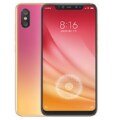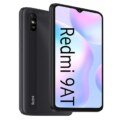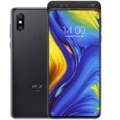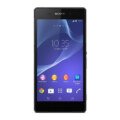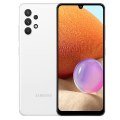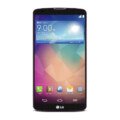Xiaomi 12S Ultra

Xiaomi 12S Ultra - Specs
Overview
| Launch | 04 July 2022 |
| Status | Available |
| Network Technology Global wireless standard for telecommunication | GSM / CDMA / HSPA / EVDO / LTE / 5G |
| Price (Initial) | ₹ 7,5K |
Design
| Body Type Design Type called form factor refers to a mobile phone's size, shape, and style as well as the layout and position of major components of phone. There are three major form factors seen in mobile phones => bar phones, folding phones and sliding phones. | BAR |
| Dimensions | 163.2 x 75 x 9.1 mm, (6.43 x 2.95 x 0.36 in) |
| Weight | 225 g, (7.94 oz) |
| Colors | Black, Dark Green |
Display
| Display Type Display Technology => A number of display technologies and types used in mobile phones => TFT (Thin Film Transistor), IPS (In-Place Switching), OLED (Organic Light Emitting Diode), AMOLED (Active-Matrix Organic Light-Emitting Diode), Super AMOLED (an even advanced version of AMOLED), Resistive Touchscreen (Resistive touchscreens contain two layer of conductive material with a very small gap between them which acts as a resistance), Capacitive Touchsceen (Capacitive touchscreen technology consists of a layer of glass coated with a transparent conductor) | 6.73 inches, LTPO2 AMOLED, 1B colors |
| Pixel Density Pixel Density (PPI) is refers to the concentration of pixels on a particular display, measured in pixels per inch (ppi). Pixel density is calculated by dividing the diagonal pixel resolution of a display by its diagonal size, higher pixel density better display quality. | ~522 ppi density |
| Display Size Size of the area where pictures and videos are displayed. | 6.73 inches, LTPO2 AMOLED, 1B colors |
| Resolution | 1440 x 3200 pixels, 20:9 ratio |
| Protection Display Protection => Gorilla Glass is a special alkali-aluminosilicate glass shield with exceptional damage resistance that helps protect mobile displays from scratches, drops, and bumps of everyday use, It is always better to go for a smartphone with Gorilla Glass for that added protection and peace of mind. | Corning Gorilla Glass Victus |
Camera
| Primary Camera Camera is able to capture photographs and usually videos, The most important characteristics of a camera are the resolution (measured in megapixels), lens focus type (fixed or automatic), higher megapixel cameras are known to capture higher quality photos, but not always a good measurement of the photos quality. | 50 MP, 48 MP, 48 MP |
| Selfie Camera | 32 MP |
| Video |
8K@24fps, 4K@30/60fps, 1080p@30/60/120/240fps, 720p@3840fps, gyro-EIS, Dolby Vision HDR 10-bit rec. (4K, 1080p) |
| Camera Features |
HDR, panorama |
| Flash Flash Light => There is commonly two types of flash lights are used in camera mobile phones, LED Flash (LED flash offers lower power consumption with drive circuitry that takes up very little room, LEDs can be strobed faster than any other light source), Xenon Flash (xenon flash produces an extremely intense full-spectrum white light for a very short duration) | Leica lenses, Dual-LED flash |
Core Specification
| Operating System OS => Every computer system run on a base software called Operating System (OS). Operating System controls all basic operations of the computer (such as smartphone, PDAs, tablet computers and other handheld devices). The Operating System allows the user to install and run third party applications (apps), apps are used to add new functionality to the device. | Android 12 |
| CPU CPU (Central Processing Unit) mostly known as processors, CPU processes instructions in order to carry out certain functions that make your device operate properly. Processors are often described as the brain of computers, smartphones and tablets, Smartphones and tablets rely on processors to carry out their every task, Processors are an incredibly important factor in selecting any type of computing device, including your smartphone. | Octa-core (1x3.19 GHz Cortex-X2 & 3x2.75 GHz Cortex-A710 & 4x1.80 GHz Cortex-A510) |
| Chipset Chipset is a group of integrated circuits designed to perform one or a more dedicated functions, often with real time computing constraints, Popular smartphones are equipped with more advanced embedded chipsets that can do many different tasks depending on their programming. | Qualcomm SM8475 Snapdragon 8+ Gen 1 (4 nm) |
| GPU GPU (Graphics Processing Unit) is a single-chip processor designed to rapidly manipulate and alter memory to accelerate the creation of images in a frame buffer intended for output to a display, This includes things such as lighting effects, object transformations, and 3D motion. | Adreno 730 |
| RAM (Memory) RAM (Random Access Memory) is a type of computer memory that can be accessed randomly, any byte of memory can be accessed without touching the preceding bytes that allows information to be stored and accessed quickly from random locations. RAM is the most common type of memory found in computer systems, smartphones, tablets and other electronic devices. | 8GB,12GB |
| Internal Storage Internal Storage is a data storage space (flash memory) mostly used in smartphones, tablets and other electronic devices where operating system, apps, music, photos, videos, files and other user data Is stored. | 256GB, 512GB |
Specification
| Sensors Sensors are electronic components that detects and responds to some type of input from the physical environment. The specific input could be light, heat, motion, moisture, pressure and location, The output is generally a signal that is converted to use in computing systems, a location sensor, such as a GPS receiver is able to detect current location of your electronic device. |
Fingerprint (under display, optical), accelerometer, gyro, compass, color spectrum, barometer |
| Battery Backup | Li-Po 4860 mAh, non-removable |
| User Interface UI or user interface of a device is the look and feel of the on-screen menu system. How it works, its color scheme, how it responds to button presses, all of these things are part of the user interface. | MIUI 13 |
| Wi-fi Wi-Fi is a popular wireless networking technology using radio waves to provide high-speed network connections that allows devices to communicate without cords or cables, Wi-Fi is increasingly becoming the preferred mode of internet connectivity all over the world. | Wi-Fi 802.11 a/b/g/n/ac/6e, dual-band, Wi-Fi Direct, DLNA |
| Bluetooth Bluetooth is a wireless communications technology for exchanging data between mobile phones, headsets, computers and other network devices over short distances without wires, Bluetooth technology was primarily designed to support simple wireless networking of personal consumer devices. | 5.2, A2DP, LE, aptX HD, aptX Adaptive |
| Model | 2203121C |
| GPS GPS The Global Positioning System is a satellite-based radio navigation system, GPS permits users to determine their position, velocity and the time 24 hours a day, in all weather, anywhere in the world, In order to locate your position, your device or GPS receiver must have a clear view of the sky. | GPS (L1+L5), GLONASS (L1), BDS (B1I+B1c+B2a), GALILEO (E1+E5a), QZSS (L1+L5), NavIC (L5) |
| USB | USB Type-C 2.0, OTG |
| SIM Type | Dual SIM, (Nano-SIM, dual stand-by) |
| NFC NFC (Near field communication) is a set of standards for smartphones and similar devices to establish peer-to-peer radio communications with each other by touching them together or bringing them into proximity, usually no more than a few inches. | Yes |
| Infrared Infrared connectivity is an old wireless technology used to connect two electronic devices. It uses a beam of infrared light to transmit information and so requires direct line of sight and operates only at close range. | Yes |
| Loudspeaker | Yes |
Xiaomi has been known for its affordable smartphones, but with the release of the Xiaomi 12S Ultra, the company has taken its flagship game to the next level. In this article, we’ll take a closer look at the 12S Ultra and what makes it a powerhouse in the smartphone market.
Design and Display
The Xiaomi 12S Ultra has a stunning design with a 6.81-inch AMOLED display that is HDR10+ certified. The screen has a resolution of 3200 x 1440 pixels, making it one of the most high-resolution displays on the market. The display is also protected by Corning Gorilla Glass Victus, which makes it resistant to scratches and cracks.
Performance
The Xiaomi 12S Ultra comes with Qualcomm Snapdragon 8 Gen 1 processor and comes with 12GB or 16GB of RAM. This makes it one of the most powerful smartphones on the market, capable of handling even the most demanding tasks with ease. The phone also comes with 256GB or 512GB of storage, giving you plenty of space to store all of your files, photos, and apps.
Camera
The 12S Ultra has an impressive camera setup, with a quad-camera system on the back that includes a 108-megapixel main camera, a 50-megapixel ultra-wide camera, a 48-megapixel telephoto camera, and a 1-megapixel macro camera. The front-facing camera is a 20-megapixel sensor, which is great for selfies and video calls.
Battery Life
The Xiaomi 12S Ultra has a massive 5,000mAh battery, which should last you a full day with normal use. The phone also supports 120W fast charging, which you can quickly charge up your phone in just a matter of minutes.
Other Features
The 12S Ultra runs on MIUI 13, which is based on Android 12. The phone also has an in-display fingerprint scanner, which makes it easy to unlock your phone without having to type in a password. It also has Bluetooth 5.2, NFC, and a USB-C port.
Conclusion
The 12S Ultra is a powerhouse of a smartphone, with a stunning design, high-resolution display, and powerful processor. It also has an impressive camera setup and a massive battery that supports super-fast charging. If you’re-looking for a flagship smartphone that can handle anything you throw at it, the-12S Ultra is definitely worth considering.



